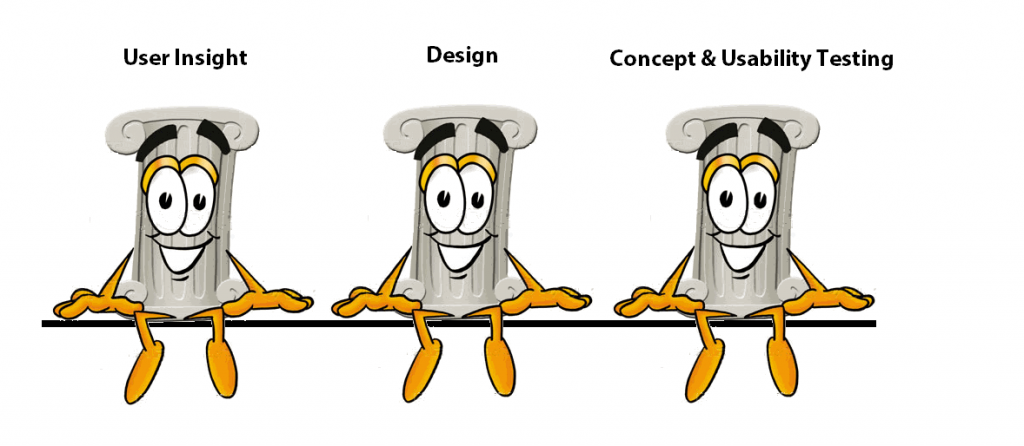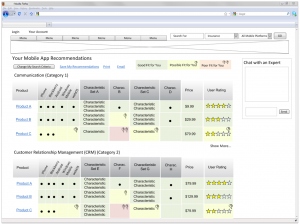By Heather Searl
Every time I log into LinkedIn I’m asked to endorse someone else for user experience knowledge. I’d like to think this proves user experience has grown from a buzz word to taking its rightful place as a core business skill that people are investing in. Unfortunately many people I talk to go on and on about how important user experience is but don’t know how to create the experience their customers are looking for.
User Experience may be on their LinkedIn profile, but it isn’t in their everyday tool kit.
What is User Experience?
 User experience, or UX, means different things to different people. In some circles it’s used interchangeably with customer experience to refer to a customer’s interaction with a product or brand from initial research through purchase, use and disposal.
User experience, or UX, means different things to different people. In some circles it’s used interchangeably with customer experience to refer to a customer’s interaction with a product or brand from initial research through purchase, use and disposal.
In the product development world user experience usually refers to designing and building a product that works the way people expect and that people will enjoy using. When you want to create a positive user experience in this world, you need to build it on the 3 pillars of:
- User insight
- Design
- Concept and usability testing
User Insight
First, you have to get out and really listen to your end users. Going out and demo’ing the latest version of your product and asking what people think won’t cut it. You’ve got to listen and observe objectively to understand where people’s pain points are, how they expect your product to work and where it fits into their lives. You need to understand their goals, frustrations, domain knowledge and tasks.
This is different than traditional market research which focuses on the “Who” and the “What” of market segments and product interest. User insight that shapes the best user experiences focuses on the “How.”
- How do people currently complete the task at hand?
- How do they deal with current obstacles and pain points?
- How knowledgeable are they in the domain and what related skills do they have or not have? For example, are users more likely to spend time web surfing and posting a status in Facebook, or do they spend time creating complex spreadsheets.)
Ideally this information is gathered by observing and interviewing potential users in their own environment.
Design
All the customer insight in the world isn’t going to help if you can’t turn it into a design that reflects the goals, workflows and attitudes of your prospective customers.
To do this you must recognize which of the following skills you need on your project.
- Interaction Design: Designing the behavior of a product
- Industrial Design: Designing the form and function of physical products
- Information Architect: Categorizing and organizing information and labeling it
- Information Design: Designing clear communication of concepts or data
- Graphic/Visual Design: Color, typography, and layout etc.
 These skills are frequently used interchangeably in job descriptions and titles, so it’s no wonder that organizations often assume the skills are interchangeable and that one designer will have them all.
These skills are frequently used interchangeably in job descriptions and titles, so it’s no wonder that organizations often assume the skills are interchangeable and that one designer will have them all.
But, designers who have mastered all of these skill sets are rare. (If you have one of these mythical creatures on staff, hold on to him or her.) Designers aren’t one size fits all. Make sure you understand the skills your team has and fill any shortfalls with freelancers, help from other teams etc.
Concept and Usability Testing
Too many companies either don’t test their product with their target market, or they wait too long to do it.
There often seems to be a desire to put the product’s best foot forward by getting customer feedback on a nearly complete product. But what happens if it has some serious issues at this point?
You’ve probably heard the phrase, “fail early, fail often, and fail cheap.” This is especially true when concept and usability testing your product.
Getting feedback as you develop the product shouldn’t be optional. Just because the workflows, widgets and language make perfect sense to YOUR team, doesn’t mean they’ll work for end users.

For software and web sites, test your structure, workflows and key interaction points early with paper prototypes or low fidelity mock ups. Do the same for hardware by building low fidelity prototypes out of cheap materials.
Follow up by testing with more refined prototypes like wireframes, 3D printed models etc. And repeat as often as the budget allows.
It’s more important to test frequently that to test with large numbers of people. When resources are tight,opt to test earlier rather than later.
Creating an outstanding user experience isn’t a dark and mysterious process. It looks a lot like any other product development process – do the research, do the work, test the work. But it is one that is still often overlooked by many organizations.
Tweet this: New post – User Experience: A Primer http://wp.me/pXBON-41V #prodmgmt #ux
 Heather is a user experience consultant and writer who believes in doing everything from a user-centric point of view. She has more than 20 years working in high tech and is well-versed in helping product management and development teams get to know their customers, understand usability issues and turn these insights into design innovations.
Heather is a user experience consultant and writer who believes in doing everything from a user-centric point of view. She has more than 20 years working in high tech and is well-versed in helping product management and development teams get to know their customers, understand usability issues and turn these insights into design innovations.
Heather can be reached at www.commconsulting.com or on Twitter as HeatherSearl.